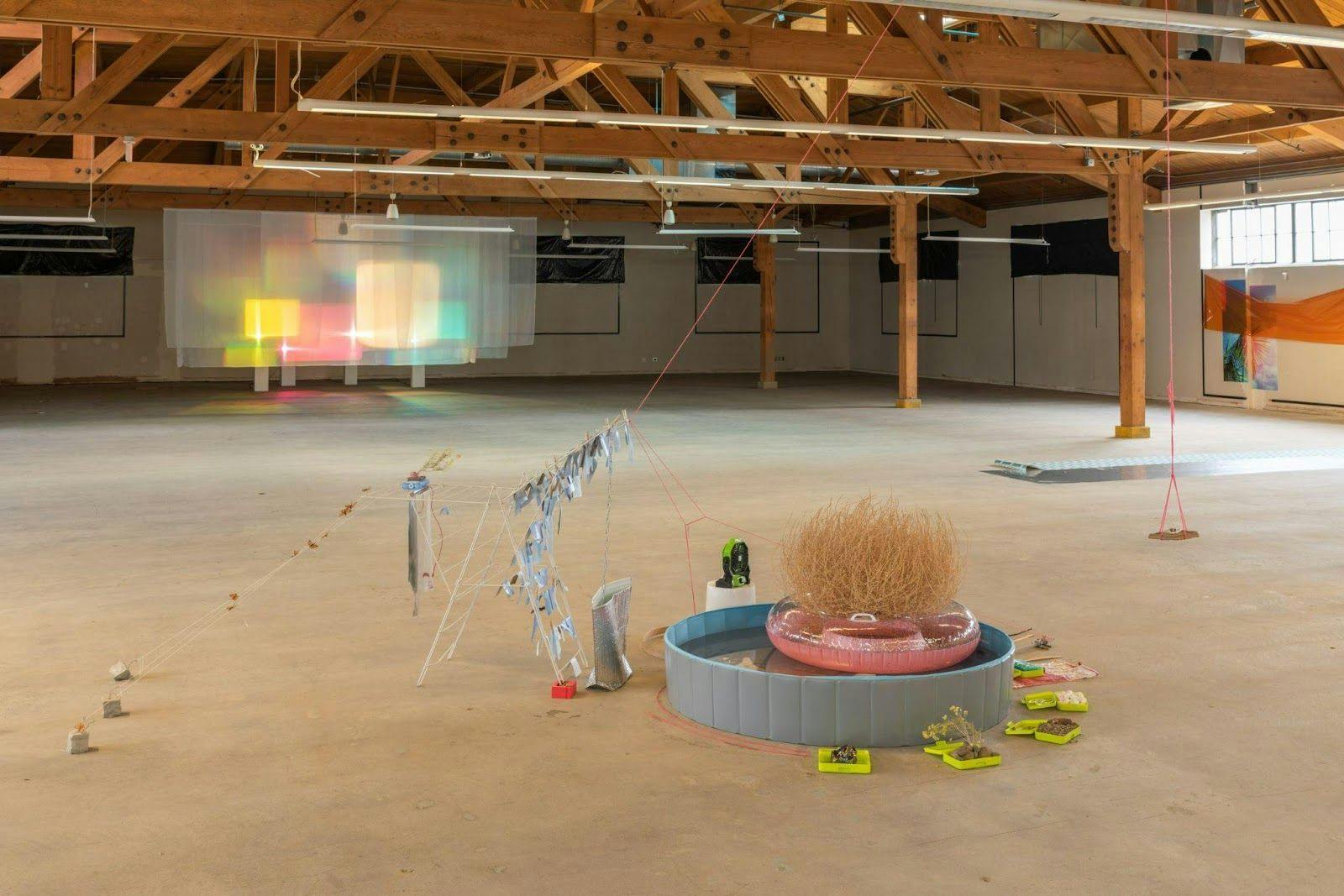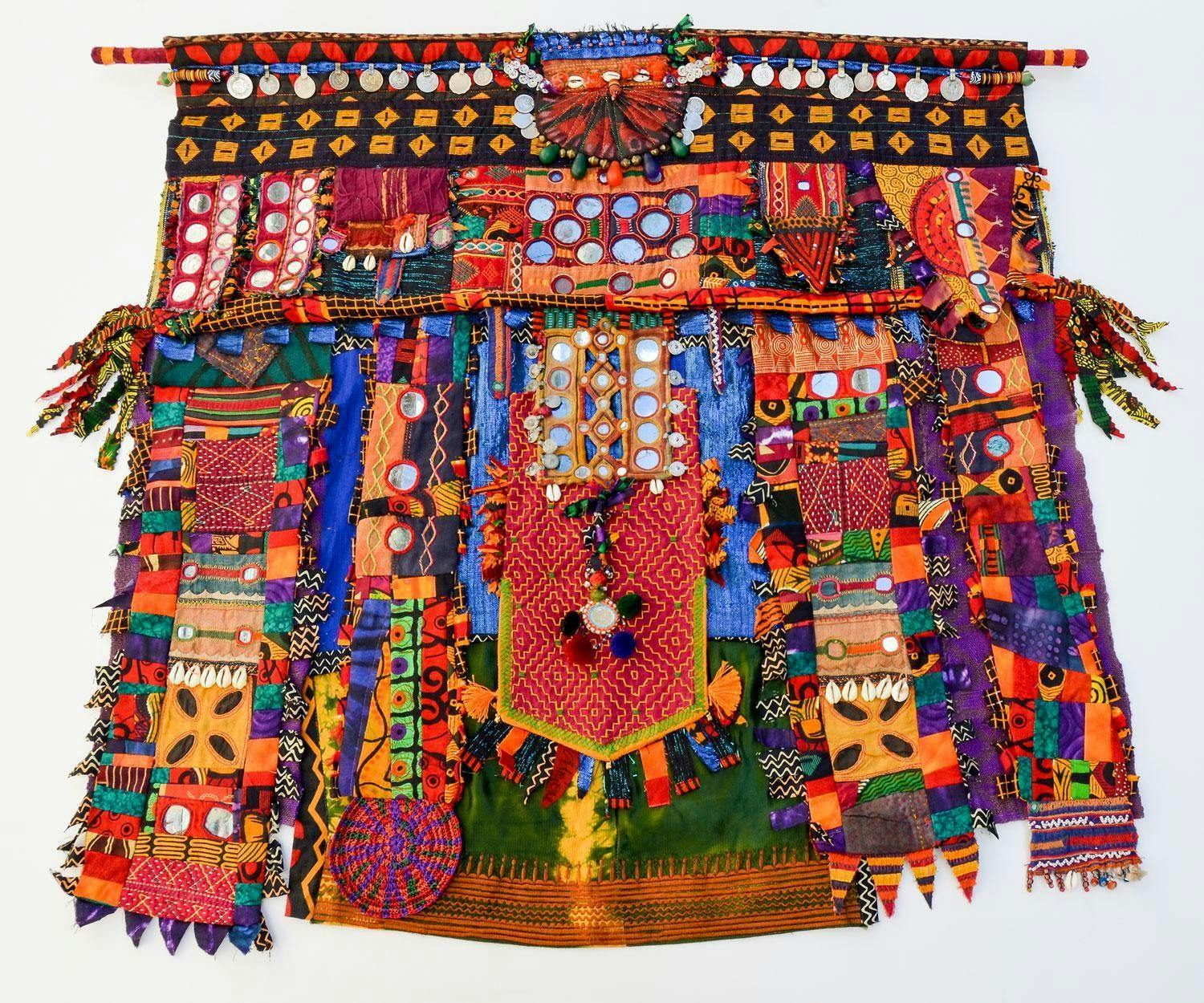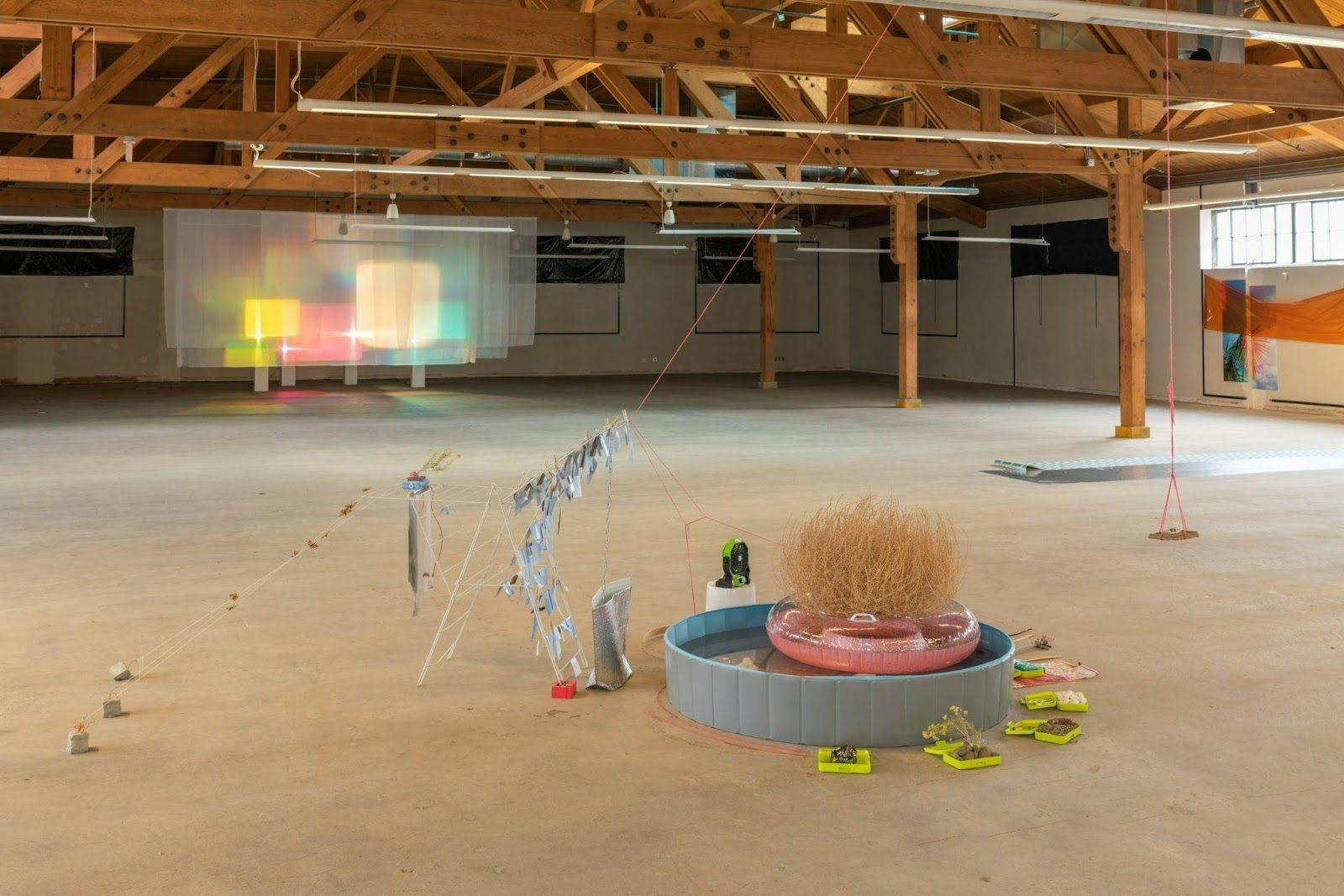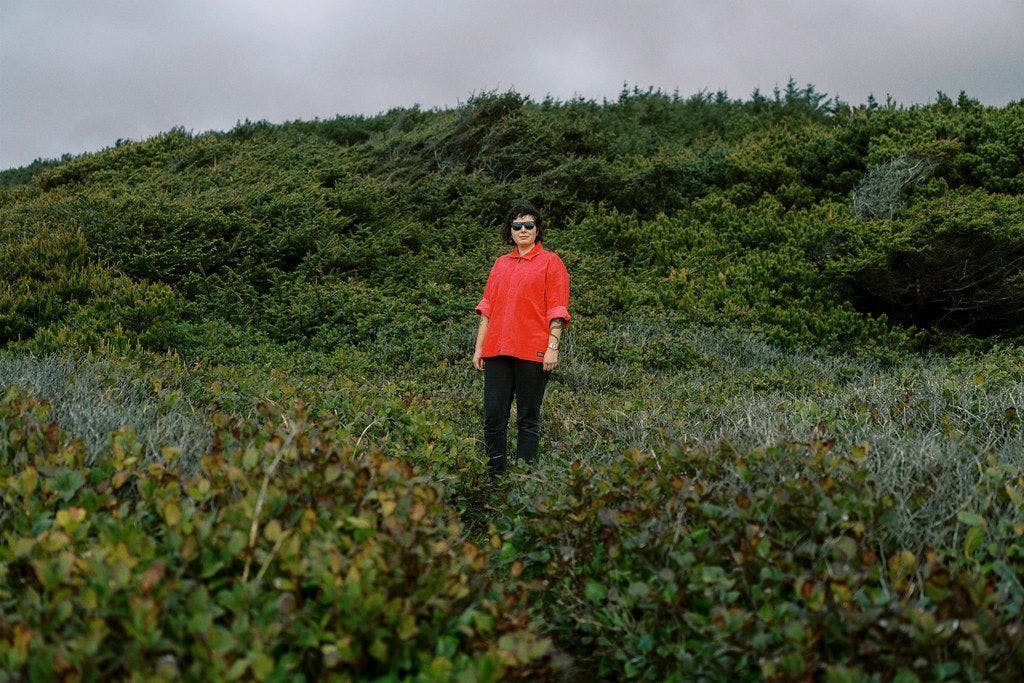Weird, Risky, Rigorous: Why I Love Portland Art
Amelia Rina
Installation view, Invincible Summer, site-specific installation by FO(u)RT Collective at SATOR projects, 2021. Photo by Mario Gallucci Studios.

2020 was probably the most stabilizing year of my life. I moved from New York to Portland in January, and serendipitously escaped living through the worst of the pandemic in my Bushwick apartment and instead stayed rent free at my mom’s house tending her garden and interning at a nearby veggie farm. There were no jobs and barely any freelance work, but I was on unemployment so I had the privilege to day dream and start my own magazine highlighting West Coast art that’s about to celebrate its third year anniversary. And, in the few blissfully unaware weeks before lockdown hit, I started meeting people in the Portland art community who made me realize this city is exactly where I want to be.


In those first weeks, I immediately got the sense that Portland was doing what the art world writ large kept saying it should do: experiment, take risks, acknowledge your past failures, support your community. The difference between Portland and my experience in New York is that Portland lacked the transactional, quid-pro-quo element in almost every interaction I’ve encountered. Instead, there’s a real sense of prioritizing collective support and care. It’s not always successful, mostly because of lack of funding and interest from the mainstream media and culture, but that doesn’t stop the art community from continuously trying, reinventing, and adapting. It makes for a fascinating scene with more great art than mediocre or bad, more friends than foes or frenemies, and a place overflowing with potential.
My six years of living in New York was mostly an experience of the art world’s self-obsessed, gate-keeping nepotism, which made Portland both a delightful and frustrating change. The scene is small, close knit, and supportive. It can also be wary of outsiders, provincial, and slow to change. I was excited to learn about Portland’s deep history of art and traditional crafts that make it an unsung art powerhouse. I missed out on some of the spaces that were important parts of regional arts history and identity because they closed before I arrived, like the Oregon College of Art and Craft, and ephemeral but impactful artist-run spaces like Chicken Coop Contemporary (yes, operated out of a chicken coop).
Jordan Schnitzer, head of the Schnitzer Family Foundation plus several art museums and institutions around the state, spoke with me about the effects of the pandemic on local arts. He acknowledged the totality of the financial devastation caused by the pandemic but added, “It gave artists a lot of time for contemplation. Our daily patterns changed; we sat down to write, read, and organize our lives more. I think it helped artists access inspiration and realize goals.” These are unprecedented times in all industries and I’ve been extremely fortunate to witness new and reimagined projects come into being.
Despite the fact that I may have missed important moments in regional history, they haven’t been forgotten. People in the local art community are amateur historians in their own right; I have no trouble finding people to tell me stories about what came before and how it relates to what’s going on now.
The relationship between Portland’s past and possible future takes center stage at The Black Gallery in the downtown Pearl District. Powered by the team behind Don’t Shoot PDX—an arts and education organization that promotes social justice and civic participation—The Black Gallery recently moved into the space previously occupied by HOLDING Contemporary, a contemporary art gallery with an innovative shareholder business model. Don’t Shoot PDX and HOLDING were longtime collaborators, producing two exhibitions each year, and this newest evolution demonstrates the art community’s commitment to making space for underrepresented voices in a historically racist city and state.
Teressa Raiford, Founder of Don’t Shoot PDX and Director of The Black Gallery explained that the downtown Portland gallery space became vacant when HOLDING decided to move to an online format. Because of Don’t Shoot’s years of collaboration with HOLDING, it was a natural fit for them to take over with a new programming. “Considering our organization’s displacement during Covid, we figured moving into an art space and connecting with a community would give us a platform to continue the work we do to drive social change. We found it very important for us to promote history, art, and Black culture.”
The Black Gallery is both Black-owned and -curated, and focuses on promoting arts and education as a way to build community and support activist voices. The Black Gallery just concluded their first exhibition, Hip Hop Lives: 50 Years of Art, History, and Culture, featuring works by Julian V.L. Gaines, Mia Lee, and a collaboration between THE SKATEROOM and the Estate of Jean-Michel Basquiat. Their future programming promises to be a range of artists whose work addresses social justice issues and explores themes of identity, culture, and history, an essential addition to a region with a violently racist and anti-Black history
Another generative reimagining of Portland’s spaces comes from curator Jess Nickel and her migrating SATOR Projects. Instead of having a fixed, physical location, Nickel approaches real estate developers and property management companies and asks to utilize vacant spaces to curate art exhibitions. Nickel asks for the gift of the vacant space and in exchange the developers build cultural capital in their space, “Not every developer or management company sees the value in this exchange, but so far those that do have expressed nothing but positive feedback,” said Nickel. “As with all exchanges, it takes mutual trust and respect for everyone to feel positive about the experience.”
Despite the ravenous and seemingly unstoppable development of Portland and cities around the country, there is an appreciation for the campy history of the place. The Portland Art Museum's Center for an Untold Tomorrow (PAM CUT), a charmingly verbose name for their theater, performing, and ephemeral arts arm, is launching a new space later this year in an abandoned X-rated movie theater. Originally built as architect Isaac Geller’s 1925 vaudeville theater, the Tomorrow Theater will serve as a model, both locally and globally, for the future of media arts and cinema.
“Cinematic storytelling, like artists and audiences, comes in all varieties and flavors. With the Tomorrow, we’re building a home for cultural snackers, a space where when people walk through this door, they will never quite know exactly what Tomorrow brings,” said PAM CUT Director Amy Dotson. “By creating a space where artists collaborate across disciplines, audiences co-mingle and are exposed to a variety of art and media stories folks; they will never have the same experience twice.”
The most expansive gesture toward international conversations landed in the Rose City this August with the kick off of Converge 45’s 2023 programming. Curated by Christian-Viveros Fauné under the theme Social Forms: Art as Global Citizenship, the biennial features over fifteen exhibitions and programs across the city throughout the fall and winter. “The art being made in Portland and elsewhere in Oregon is beyond world class,” said Viveros-Fauné. The Converge 45 team plans to celebrate regional art by putting it in conversation with artists who have greater name recognition and creating a framework that demonstrates the connections between them.

Still, what I appreciate most about his approach is the understanding that much of Portland isn’t used to this type of programming and Vivero-Fauné is taking that into consideration: “The challenge of 'ennials is always to connect the local with the global across as many disciplines and groups of people as possible: artists, institutions, funders, sponsors, curators, staff, critics, writers, etc. One wants to do this organically, so when the exhibition arrives it doesn't feel like an alien spaceship crash landed on the city and took off again. Putting on a multi-venue exhibition like Converge 45 is about raising the bar on local culture and local cultural producers in Portland, but also about showing bigger cities that don't do global biennials how it's done.”
Converge 45, like all worth-while experiments, is bound to be full of successes, failures, and plenty of learning opportunities. Portland, almost as a rule, loves to get weird and take risks, which makes it an ideal location for this type of programming. Just look at what’s going on at the Lloyd Center, the massive shopping mall that was abandoned during the pandemic has since been taken over by galleries, kitschy photo studios, and a Samuel Beckett play performed in an abandoned Victoria’s Secret.
The art world in the US and internationally can learn from Portland. It’s one of the last (relatively) affordable, actually cool cultural hubs in the country—maybe the last? That means many artists can afford studio spaces and the cost of living isn’t suffocating (read: there’s no sales tax in Oregon). There is a small, but very strong gallery scene, and a small, but very strong independent art institution scene. The museums are struggling for relevance, but they’re working on it. What some might say is a financial underperformance is also the deeply anti-capitalist culture that celebrates no-holds-barred risk taking, somewhat funded by institutional and government bodies. There aren’t many blue-chip collectors locally, but gallerists know how to work around that.

Portland can act as a model for smaller US cities working to become cultural centers and uplift their art communities, as well as larger cities that need to reconnect with their cultural identity and dissolve a hyper-capitalist, inhumane model.
As Schnitzer told me, “There are many things Portland is not, but there are so many things that it is.” It’s a region as lousy with volcanoes as it is with rigorous artists and art workers, and I plan to be here for a very long time.
